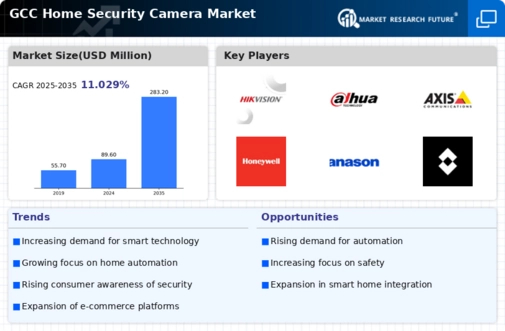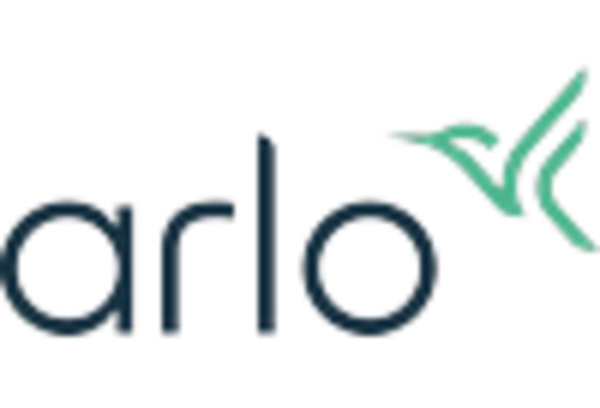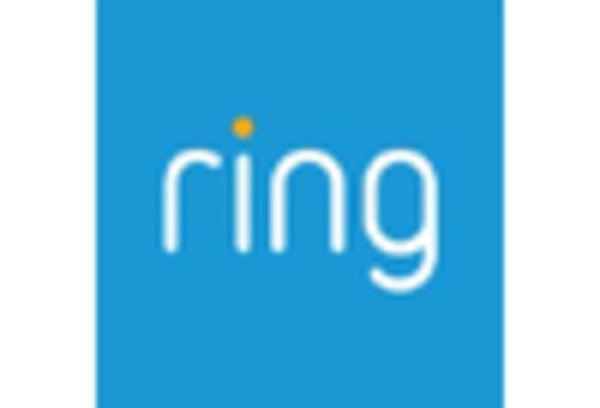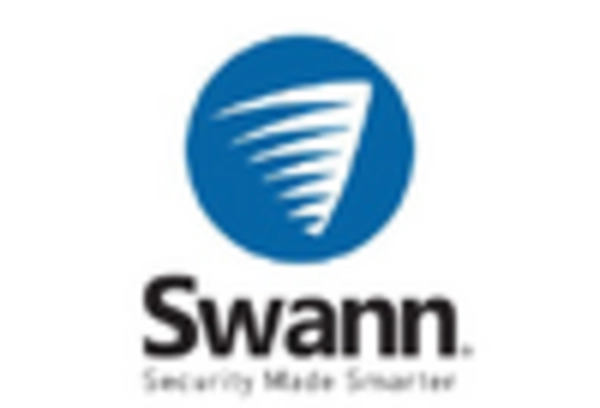Increasing Crime Rates
The rise in crime rates across various regions in the GCC has led to heightened concerns regarding personal safety and property security. This trend appears to be a significant driver for the home security-camera market, as homeowners seek effective solutions to deter criminal activities. According to recent statistics, certain areas have reported an increase in burglary incidents by approximately 15% over the past year. Consequently, the demand for home security cameras has surged, as these devices provide real-time monitoring and recording capabilities. The home security-camera market is likely to benefit from this growing need for enhanced security measures, as consumers prioritize the protection of their homes and families.
Rising Disposable Income
The increase in disposable income among consumers in the GCC is contributing to the growth of the home security-camera market. As individuals experience improved financial stability, they are more willing to invest in home security solutions. This trend is particularly evident in urban areas, where the demand for advanced security systems is escalating. The home security-camera market is poised to capitalize on this trend, as consumers seek high-quality products that offer enhanced features and reliability. Market analysts suggest that the willingness to spend on security measures may lead to a more competitive landscape, with manufacturers striving to meet evolving consumer expectations.
Growing E-commerce Platforms
The expansion of e-commerce platforms in the GCC has significantly influenced the home security-camera market. With the convenience of online shopping, consumers are more inclined to purchase security cameras from various online retailers. This trend is supported by the increasing availability of diverse product options and competitive pricing. Recent data indicates that online sales of home security products have grown by approximately 20% in the last year. The home security-camera market is likely to continue benefiting from this shift, as e-commerce provides consumers with easy access to the latest technologies and customer reviews, facilitating informed purchasing decisions.
Technological Integration in Smart Homes
The integration of advanced technologies in smart home systems is transforming the home security-camera market. As consumers increasingly adopt smart home devices, the demand for security cameras that seamlessly integrate with these systems is on the rise. Features such as remote access, mobile notifications, and compatibility with voice assistants are becoming essential. The home security-camera market is witnessing a shift towards cameras that offer high-definition video, night vision, and cloud storage options. This technological evolution not only enhances user experience but also encourages consumers to invest in comprehensive security solutions, thereby driving market growth.
Regulatory Support for Security Solutions
Regulatory frameworks in the GCC are increasingly supporting the adoption of security solutions, including home security cameras. Governments are recognizing the importance of enhancing public safety and are encouraging the installation of surveillance systems in residential areas. This regulatory support is likely to drive the home security-camera market, as homeowners are incentivized to invest in security measures. Initiatives such as tax rebates or subsidies for security system installations may further stimulate market growth. As regulations evolve, the home security-camera market is expected to expand, providing consumers with more options and encouraging widespread adoption.

















Leave a Comment